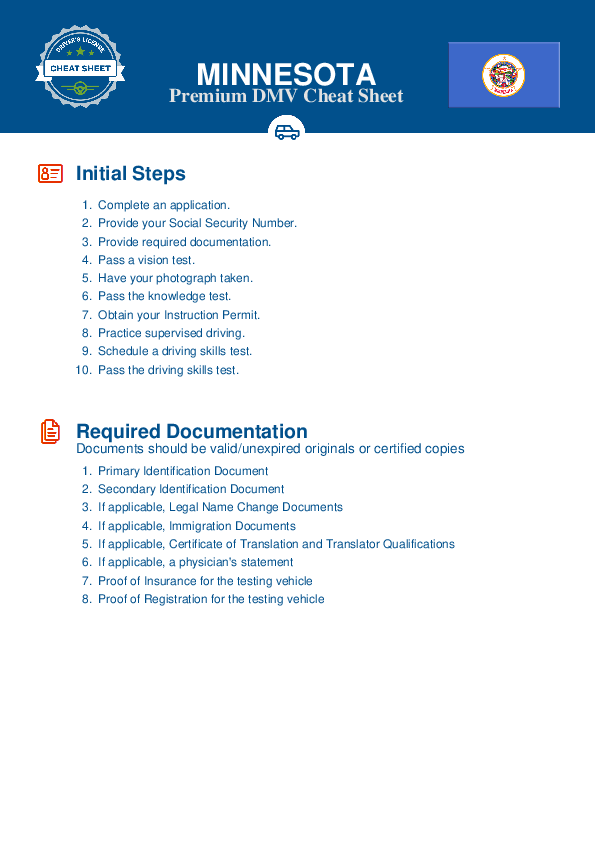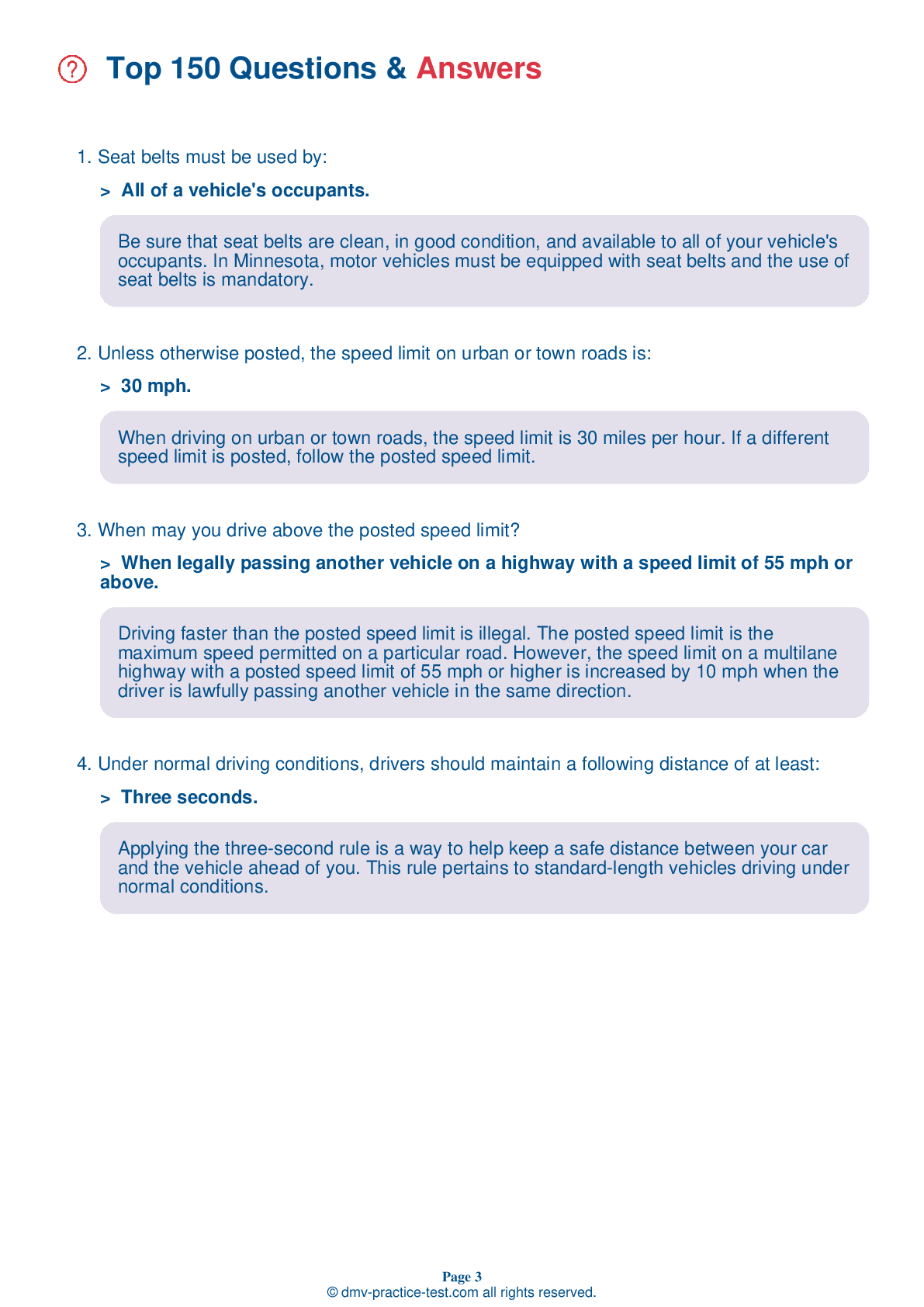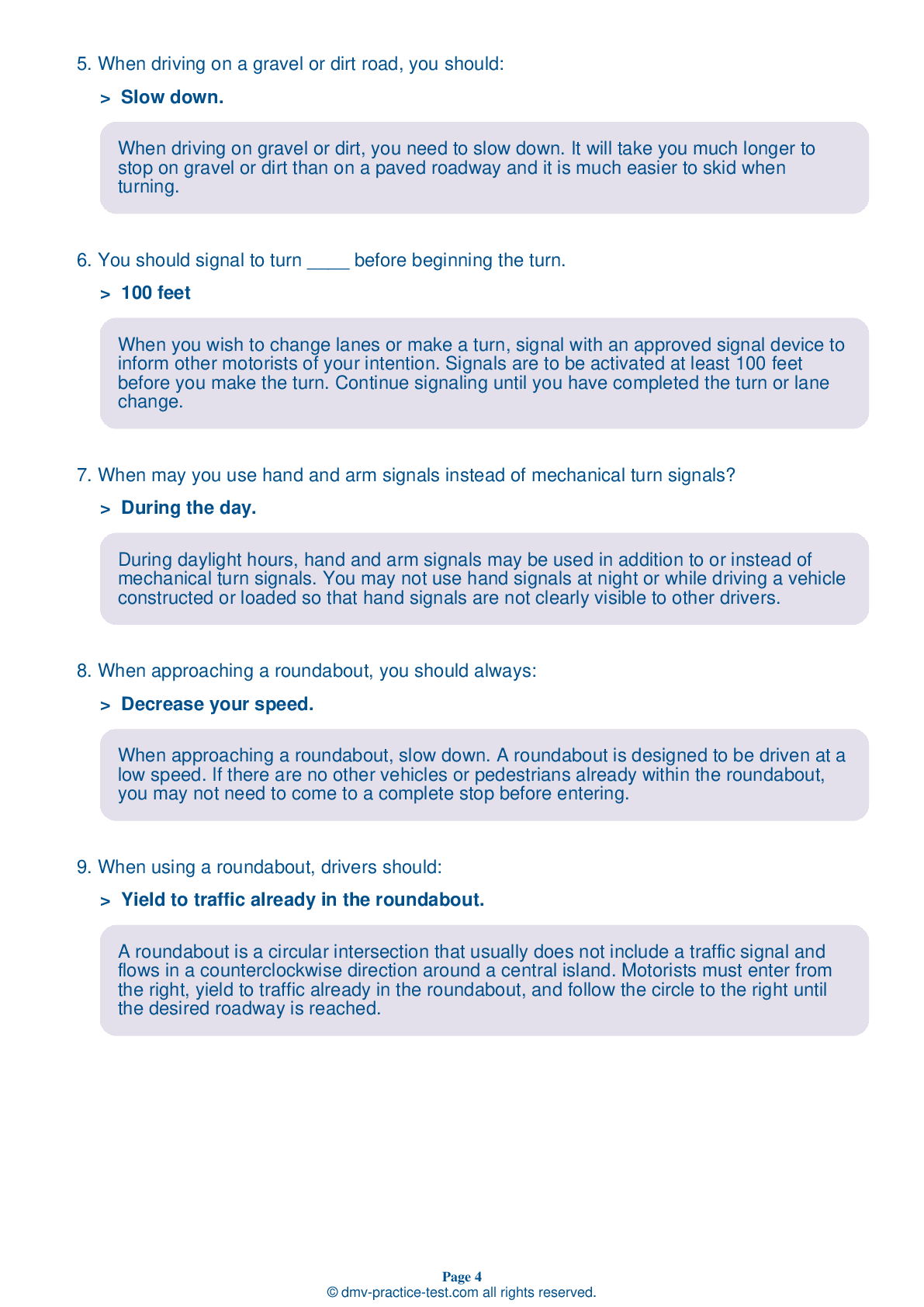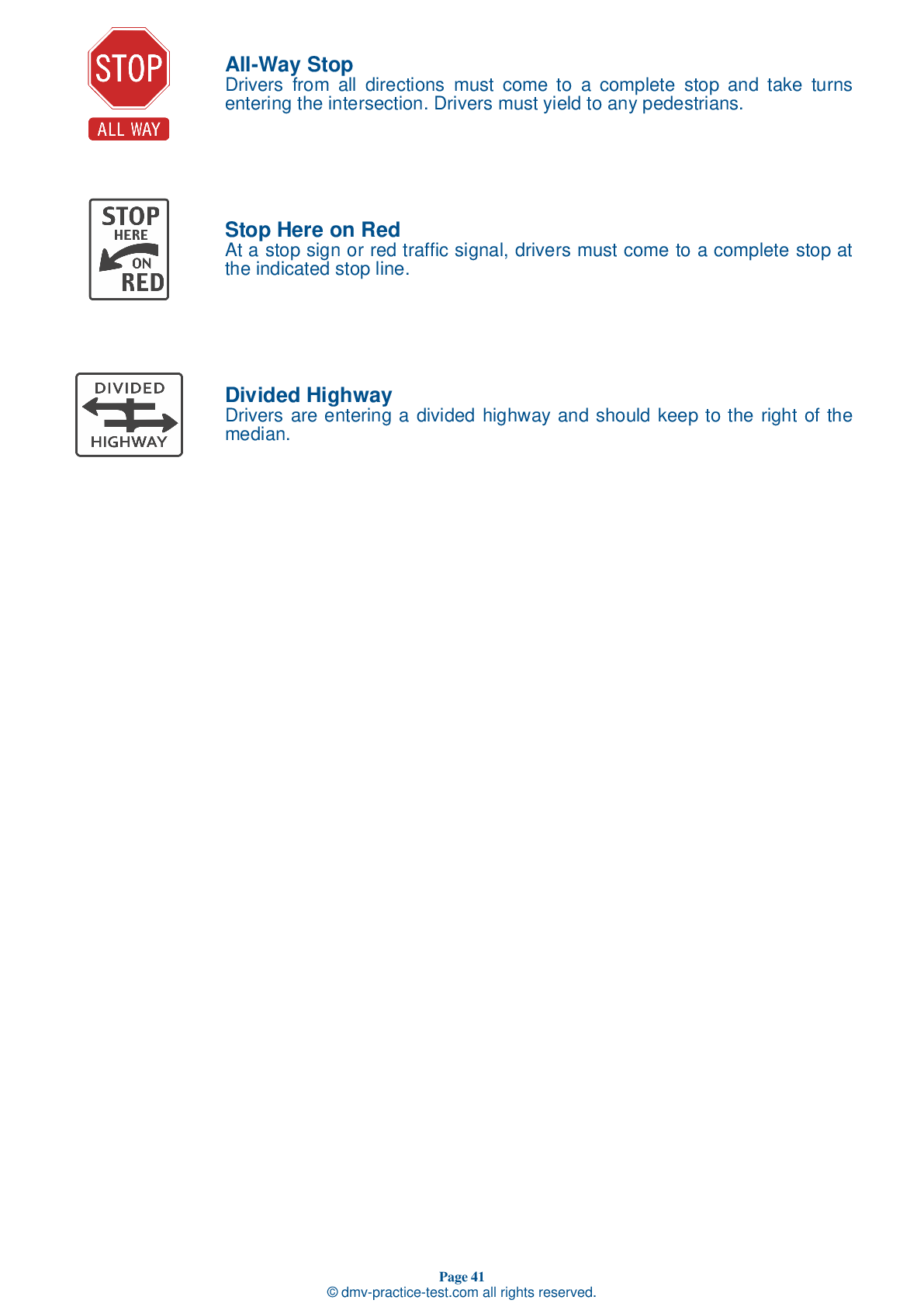FREE Minnesota DMV Practice Test #9 Page 3 of 5
The Minnesota DMV practise examinations have been updated for January 2025. It includes questions based on the Minnesota Driver Handbook's most essential traffic signals and laws for 2025. Use actual questions that are very similar (often identical!) to the DMV driving permit test and driver's licence exam to study for the DMV driving permit test and driver's licence exam.
On the practise exam, each question gets a tip and explanation to help you remember the concepts. The written component of the official Minnesota DMV test will include questions about traffic rules, traffic signs, and driving statutes, as well as knowledge from the Driver Handbook.
To obtain a passing grade, you must correctly answer 32 of the 40 questions. To help you prepare for your instruction permit or driver's licence, take our Minnesota DMV practise test.
The DMV exam is available in several languages.
Using any kind of testing assistance will result in an automatic fail, and the DMV may take additional action against your driver's licence, so stay away from it.
17 . If you need to slow down while driving on a slippery road, the first thing you should do is:
To slow down on a slippery road, you should first take your foot off the gas pedal. If you need to slow down even more, gently apply a slow, steady pressure to your brake pedal.
18 . When is it permissible to text while driving?
Drivers may not use a cell or mobile telephone for text messaging while driving, except in the case of an emergency. Looking away from the road for any amount of time increases the possibility of a collision.
19 . When driving on wet pavement, it's important to remember:
Wet roadway surfaces can be dangerously slick, especially immediately following a rainfall. When you are driving on wet roads, your vehicle is traveling on a thin layer of oil, dirt, and water. Slow down when there is heavy rain, standing water, or slush on the road to reduce the risk of your wheels losing traction on the slick surface.
20 . Traffic signals sometimes display arrows to control turns from specific lanes. A green arrow:
A green arrow has the same meaning as a circular green traffic light, but traffic in the indicated lane must turn in the direction shown by the arrow.
21 . Do not pass:
You should never pass if there is an oncoming vehicle in the passing lane, if your view is blocked by a curve or hill, at an intersection, before or on a railroad crossing or bridge, or in any other no passing zone. Unless you are on the opposite side of a multilane roadway with a median or shared center turn lane, you may not pass a stopped school bus that has its flashing red lights activated.
22 . If your car starts to skid, turn your steering wheel:
If your vehicle goes into a skid, you should turn the steering wheel in the direction you want the vehicle to go. As soon as the vehicle begins to straighten out, turn the steering wheel back the other way.
23 . As you drive, you're required to stop your vehicle:
Situations where motorists are required to stop include approaching intersections with stop signs, approaching intersections where a red light is either flashing or illuminated, or any time when a traffic officer orders your vehicle to stop.
24 . The best way to avoid loss of control under wet conditions is to increase your vehicle's speed.
As you drive on a wet road, your tires may start to ride up on the surface of water, causing you to lose control of your vehicle. This is called hydroplaning. The best way to avoid hydroplaning is to lower your speed when driving under wet conditions.
See the exact questions that will be on the 2025 Minnesota DMV exam.
99.2% of people who use the cheat sheet pass the FIRST TIME
LT gives us an insight on how the cheat sheet provided her with all the study questions she needed before taking her test.
Joe initially studied with the handbook and failed his test, he eventually found us online, studied and pass his test the first time around.



